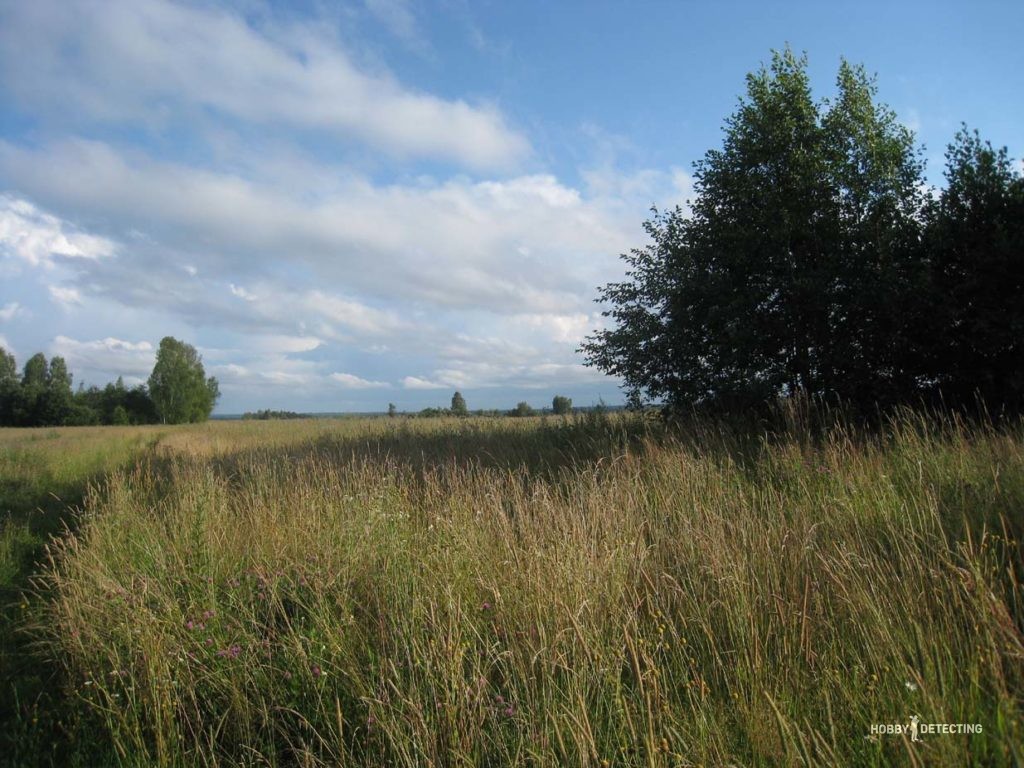Where to dig? (age-old question)
While it’s winter and there’s a lot of snow, I suggest you think about finding new places.
I constantly hear this question from my familiar diggers, so I consider it necessary to tell my thoughts on this matter.
Where to start?
Содержание статьи:
Let’s look at everything in order. To understand where to go to dig, you need to have the necessary local history knowledge, ingenuity and imagination to paint the past with broad strokes right on the ground. Essentially, you are building a real time machine in your head.
First, just look around. It will be much easier if you live in the village where your grandfathers lived. Many people know the old villages where their ancestors came from. This information will also come in handy. You can take the device and walk around these villages or directly into them if people no longer live there.
If you live in a big city, it will be a little more difficult. In residential areas, in addition to landfills, you will find something hidden, and you will gather quite a few curious people.

What you need to know?
You can take a walk around the area. You can even get into a car and go in search of ancient villages, but this will clearly not be enough! What do you need? The answer lies on the surface — You need cards!
The more cards you have — all the better. Without the ability to read maps and correlate them on the ground, you will have a very hard time, these are the most necessary skills in our business!
I advise you to start by taking the royal cards of the late 19th — beginning of the 20th century. This is a layout, two or three layouts. You take a certain area on the map and compare it with modern satellite imagery. In this case, you can even use the well-known Google Maps application.
The more cards you have for different periods, the better. By comparing several maps you can trace how the entire infrastructure changed, how villages grew, when roads were built, etc.

What to look at on the map?
Thinking about where to go to dig, I came to a logical conclusion. Where there were more people, we had to dig there. The deeper into the centuries we dig, the more difficult it is to answer this question. The problem lies in the lack of clear maps; they simply did not exist 300-400 years ago. Or rather, of course they exist, but they are very peculiar for modern perception.
In the modern world, people gather in large cities, where all life is in full swing. A hundred years ago the picture was, to put it mildly, different. We need to discard the cities, modern highways, and return in our search for places to the origins of a hundred years ago.
In those days, life was in full swing in large villages and villages, large estates. We need to find such places on the map and compare them with the current state. We need to find out what is now located on the site of ancient villages, churches and estates, is it possible to dig there?

What it looks like in practice?
I’ll tell you about my personal approach to this task. In order to find a new place where I can go for reconnaissance, I take a mileage map and look at the villages. Don’t be too deluded if you choose large old villages near big cities — the fields around may have been knocked out long ago before you, but it is impossible to know for sure.
To find out how old the villages are, I start comparing several maps from the 18th and 19th centuries. It is important to pay attention to the presence of churches, as well as the location of major road routes. Having thus chosen the desired search area, I now turn to modern satellite imagery. It’s a matter of taste — dig in the forest or in the field, it’s your choice.

Everything is learned with experience
Using maps alone, it’s impossible to accurately determine the location where there will be a mountain of interesting finds. On the maps you only indicate an area for more detailed research. You go to the place to see everything with your own eyes and already get your bearings on the spot.
Personally, I like to dig in the fields under old villages. What usually happens is that the fields are full, but there are finds only in certain patches. To find these spots, I comb many hectares of fields up and down. Persistence in this matter is rewarded. Chuika comes to swag jobs with experience.
The Golden Rule — the more you look, the more you will find!
Good luck finding new places!
Read other tips next…
